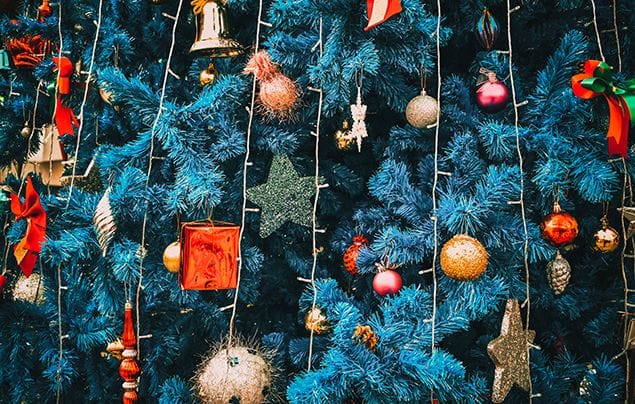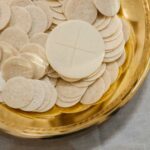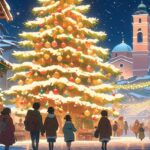Let’s dive into the enchanting and festive world of Christmas! From its captivating origins to the vibrant traditions we hold dear, there’s a ton of fun and fascinating things to discover about this special holiday. Get ready to unwrap the magic of Christmas and embark on a joyful journey of discovery!
Christmas Facts for Kids
Hey kids, ever wondered what makes Christmas so special? It’s more than just presents and yummy treats, although those are pretty awesome! Let’s uncover some cool facts about this joyful holiday!
The Story Behind the Celebration
Christmas commemorates the birth of Jesus Christ. Christians believe Jesus is the son of God, making this day incredibly important! They celebrate his birthday every year on December 25th.
Decorations and Festive Fun
Christmas time means it’s time to deck the halls! Families decorate their homes with sparkling lights, colorful ornaments, and pretty green holly. And it wouldn’t be Christmas without presents, right? People exchange gifts with loved ones and attend church services to celebrate. Singing carols together and sending warm wishes spreads holiday cheer everywhere!
The Meaning Behind the Colors
Ever noticed how green and red are everywhere during Christmas? Green represents new life and new beginnings, just like spring follows winter. Red holds a special significance too, reminding us of Jesus’s love for everyone. And then there’s gold, symbolizing precious light, riches, and royalty!
Cool Christmas Trivia
- Different countries celebrate Christmas in unique ways, from exciting ice skating adventures to enjoying special holiday dishes.
- Did you know Christmas trees were first used by ancient Germans? They used these trees as a symbol of life during the cold winter months.
- The jolly old man in the red suit, Santa Claus, started delivering gifts in the 1800s. Can you imagine Christmas without him?
- Ever wondered how Santa delivers gifts all around the world in just one night? He has some special helpers – reindeer! Reindeer are strong and can walk on snow, making them the perfect sleigh-pulling team!
Why Do We Celebrate Christmas on December 25th?
We know Christmas celebrates the birth of Jesus. But here’s the thing – the Bible never explicitly states that Jesus was born on December 25th.
In ancient Rome, a grand winter festival called Saturnalia took place from December 17th to the 23rd, honoring Saturn, their god of agriculture. People celebrated with feasts, gifts, and decorations. Some historians believe early Christians might have chosen December 25th for Christmas to coincide with these popular festivities.
Another theory connects Christmas to the winter solstice, the shortest day of the year, usually around December 21st or 22nd. Many ancient cultures saw the solstice as a symbol of rebirth and light returning after darkness. Since Jesus is often referred to as the “light of the world,” linking his birth to this time of year makes sense.
The word “Christmas” itself stems from “Christ’s Mass,” a special church service honoring Jesus. While early Christians believed Jesus was born in springtime, the exact date remained unknown. In the 4th century, Pope Julius I declared December 25th as Christmas Day, potentially aligning it with Roman festivals, the winter solstice, or both.
Over time, Christmas evolved beyond its religious roots, becoming a global celebration blending different traditions and customs. Today, we celebrate with gifts, family gatherings, Christmas trees, sparkling decorations, and delicious meals – a fusion of traditions from various places and times.
While the exact reason we celebrate Christmas on December 25th remains a mystery, one thing is certain: it’s a time for joy, hope, and celebrating life and new beginnings.
Looking for some jolly information about December? Check out some amazing December fun facts for kids that will keep your little ones entertained this holiday season!
Red, Green, and Gold: Decoding Christmas Colors
Ever wondered why we deck the halls with so much red, green, and gold during Christmas? These colors aren’t just festive; they’re packed with meaning!
Unwrapping the Symbolism
Red, the color of a cozy fireplace and Santa’s suit, holds a deeper connection to Christmas. It reminds us of the sacrifices made by Jesus and the warmth we share with loved ones.
Green, the color of evergreen trees that stay strong even in freezing temperatures, represents the enduring spirit of life and hope that Christmas brings.
And gold? This shimmering hue instantly makes us think of sparkling ornaments, twinkling lights, and the precious gifts the Wise Men brought to baby Jesus. Gold celebrates the light and joy that brighten even the shortest days of the year.
A Rainbow of Christmas Traditions
While red, green, and gold are the stars of the Christmas color show, other hues add their own special touch. White represents the purity of freshly fallen snow and the hope of a new year. Purple, often used in churches, symbolizes the royal arrival of Jesus. Calming blue represents peace and serenity. In some places, you’ll even see silver decorations, reflecting the moonlit nights and adding a touch of magic.
Feeling Festive: The Psychology of Christmas Colors
The colors around us can impact our mood. Red decorations make a room feel instantly warmer and more exciting. Green has a calming effect, like taking a walk through a peaceful forest. And gold makes everything feel more joyful and special.
Keeping it Green (and Red and Gold!): Sustainable Decorating
While we all love a colorful Christmas, it’s important to celebrate in a way that’s kind to our planet. Instead of plastic decorations, consider using natural elements like pinecones, cinnamon sticks, and sprigs of evergreen. When it comes to twinkling lights, LED lights use less energy and last longer than traditional bulbs. By making eco-friendly choices this Christmas, we can keep the holiday spirit bright for years to come!
From Saint Nicholas to Santa: The Story of the Jolly Old Elf
Remember Saint Nick? He’s the reason we have Santa! This generous 4th-century bishop was famous for his big heart and miracles. He loved surprising kids with gifts and was known to help sailors braving stormy seas.
As time went on, word of Saint Nicholas’ kindness spread across Europe. In the Netherlands, he became Sinterklaas, visiting every December 6th, handing out treats to well-behaved children and leaving lumps of coal for the mischievous ones.
Dutch settlers brought their Sinterklaas traditions to New York in the 17th century. The legend changed over time, gradually transforming Sinterklaas into the Santa Claus we know today. He traded his bishop robes for a cozy red suit and embraced the “ho-ho-ho.”
Clement Clarke Moore’s poem “A Visit from St. Nicholas” cemented Santa’s modern image, painting a vivid picture of this magical elf with his white beard, reindeer-powered sleigh, and a sack overflowing with toys.
- Crypto Quotes’ Red Flags: Avoid Costly Mistakes - June 30, 2025
- Unlock Inspirational Crypto Quotes: Future Predictions - June 30, 2025
- Famous Bitcoin Quotes: A Deep Dive into Crypto’s History - June 30, 2025

















Comments are closed.